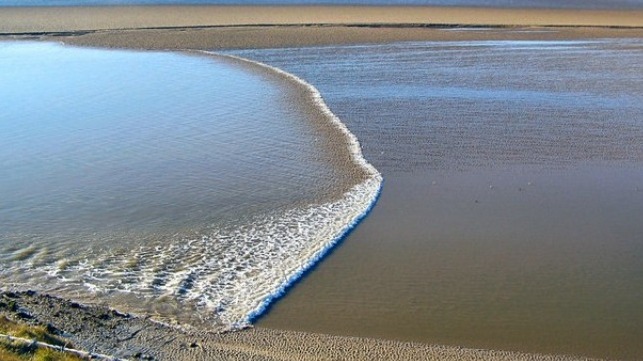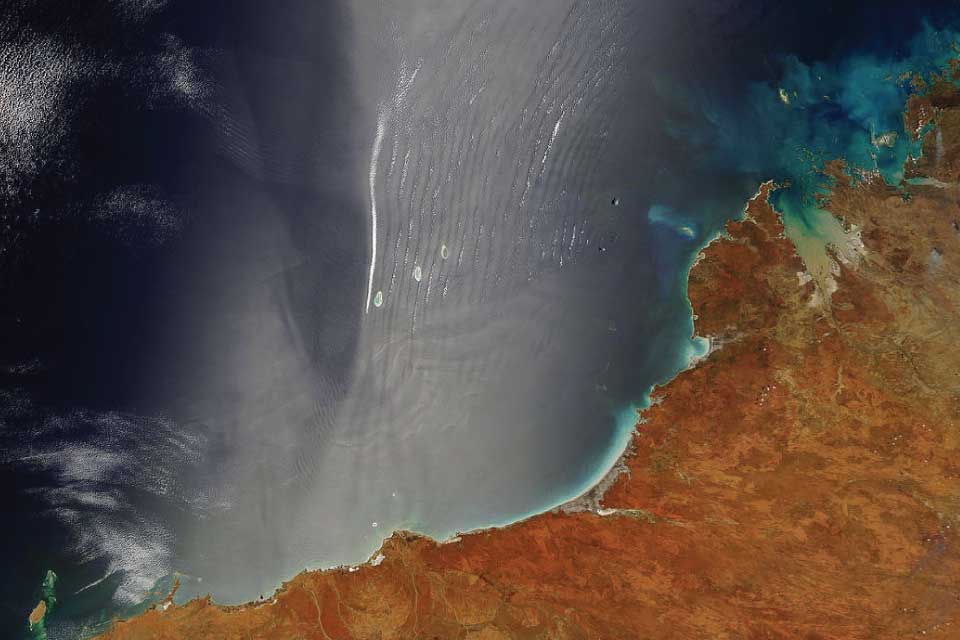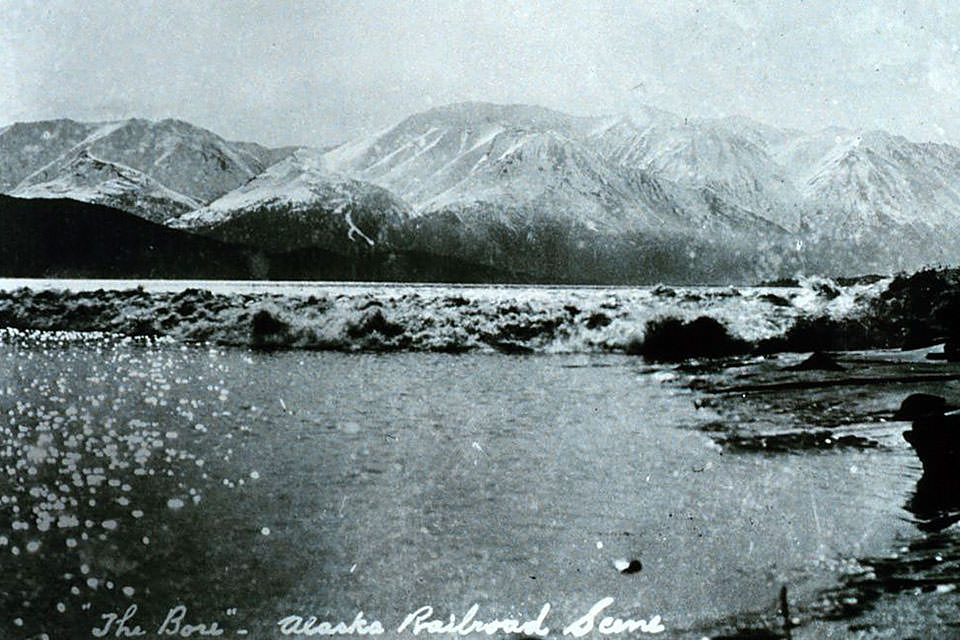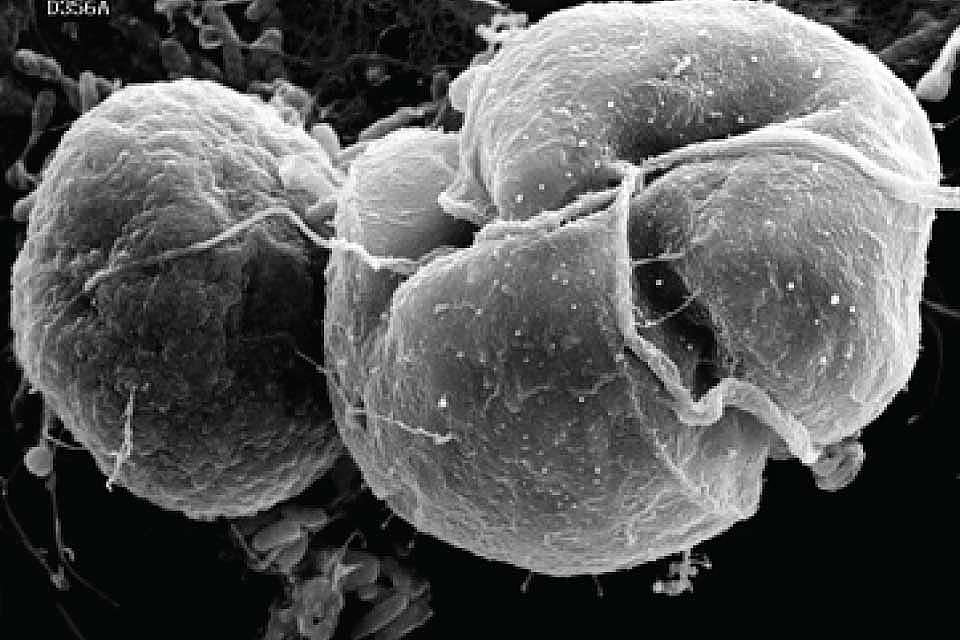Four Rarely-Heard Ocean Terms

1. Gravity Wave
Gravity waves, not to be confused with gravitational waves, form when air is pushed up and gravity pulls the air back down. On its way down, air displaces ocean water, forming waves that look like vertical channels. There are different types of gravity waves. Gravity waves that form on the surface of the water are called surface gravity waves. Waves that occur inside of a body of water are called internal waves. Waves created by wind on the surface of the water are wind-generated waves.

Aerial view of a gravity wave. Credit: NASA/GSFC/MODIS Land Rapid Response Team and Jeff Schmaltz
2. Tidal Bore
A “tidal bore” - also called a “bore tide,” mascaret (French), pororoca (Brazilian), and “the Bono” (Indonesian) - occurs when the water in relatively shallow, sloping estuaries or rivers moves as one massive solitary wave. In order for a tidal bore to occur, the local tides must be higher than average, and large amounts of water must be concentrated as it flows down tight channels. Tidal bores can reach up to 20 feet in height.
This historic photograph (below) shows a tidal bore in Turnagain Arm, a waterway that flows into Cook Inlet, Alaska. Turnagain and Knik Arms — two narrow branches of water near Anchorage, Alaska — are the only locations in the United States where tidal bores occur regularly.

3. Hadal Zone
The ocean is made up of five “zones.” The hadalpelagic zone, commonly known as the hadal zone, is the deepest part of the ocean, with depths ranging from approximately 6,096 meters to 10,973 meters (20,000 feet to 36,000 feet). Named after the Greek underworld Hades, the hadal zone is made up of a series of trenches, troughs, and deep depressions. The hadal zone remains one of the least investigated and most mysterious places on Earth. More than 400 species are now known to live in the 21 trenches of the hadal zone.

Cusk eels (family Ophidiidae) are common in the deep sea, like this one of the genus Leucicorus. NOAA Office of Ocean Exploration and Research, 2016 Deepwater Exploration of the Marianas.
4. Mixotrophy
Most people think of life on Earth as being divided into two categories: plants and animals. But that’s not always the case. In the ocean, some single-celled, planktonic algae, have the ability to photosynthesize like a plant and consume other organisms like an animal. This hybrid source of nutrition is called “mixotrophy.” A study from NOAA’s National Ocean Service found that mixotrophic algae may have an advantage in the formation of harmful algal blooms — when algae grow out of control and produce toxic or harmful effects on people, fish, shellfish, marine mammals, and birds. The information from the study will allow scientists to improve the models that predict these dangerous occurrences.

Scanning electron microscope image of the dinoflagellate Karlodinium veneficum (right) feeding on a cryptomonad-type alga Rhodomonas — an example of mixotrophy. From Place et al. 2012, Harmful Algae 14:179–195. Credit: Vince Lovko, Virginia Institute of Marine Science.
This post appears courtesy of NOAA and may be found in its original form here.
Top photo: Arnold Price, CC BY SA 2.0
The opinions expressed herein are the author's and not necessarily those of The Maritime Executive.
